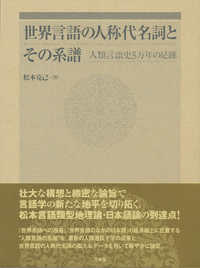- ホーム
- > 洋書
- > 英文書
- > Literary Criticism
Full Description
This study of the literary culture in Britain in the years after Waterloo begins with an account of two fatal duels, the famous duel of 16 February 1821, in which John Scott, editor of the London Magazine, fell, and the less well known duel of 26 March 1822, in which Alexander Boswell, son of Johnson's biographer, was killed. These duels, Richard Cronin suggests, bring into sharp focus the distinctive features of literary culture in the years after Waterloo. The book ranges widely but at its centre are the three literary phenomena that best define the period: Walter Scott's novels, Byron's Don Juan, and the new literary magazines. It was a culture constituted not by the doctrine of sympathy that its leading writers held in common but by the antagonisms that divided them, a culture in which England vied with Scotland, literary and political principles converged, and there was a volatile relationship between the public and the private. These were the years in which publishing became an industry serving a mass readership, and literature came to be decisively identified with print rather than with manuscript. Its most prized cultural products were miscellaneous. Superficial, even heartless, responses to the world were valued. Male writers responded aggressively to the threat that literature might be a kind of writing largely consumed by women and increasingly produced by them. This was the culture that writers such as Wordsworth repudiated, but the relationship between the culture that Wordsworth represented and the culture that he opposed, like the relationship between duellists, was at once violently aggressive and mutually supportive: each, as many writers of the period recognized, was dependent on the other.
Contents
1. Introduction: Two Duels ; 2. Two Dinners ; 3. Personalities ; 4. Flesh-Coloured Silk ; 5. Remembering Peebles ; 6. Mr. Knight's Best Small Capitals ; 7. Pistols and Horsewhips ; 8. Disunity of Mind: The Novel as Magazine ; 9. Practical Asyndeton: The Poem as Magazine ; 10. Cruel Mockeries ; 11. Jack and Gill ; 12. Conclusion: Two Cultures ; BIBLIOGRAPHY






